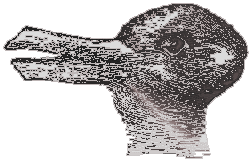 Gregory Eiselein
Gregory Eiselein Gregory Eiselein
Gregory Eiselein
Basic Assignment. This assignment asks you to write a critical essay that provides a cultural analysis of a multicultural American literary text written before World War I, something prior to literary modernism and on our syllabus.
Purpose. This assignment is built on the premise that understanding a particular culture will help us to better appreciate and comprehend that culture’s literary productions, just as a careful reading of a literary text may lead us to better understand the culture from which it emerged. In this paper, you will practice and develop the skills associated with the second, third, and fourth of our five primary course goals.Cultural Analysis. For the purposes of this assignment, "cultural analysis" means making connections between a text we've read and the cultural contexts in which that text emerged or circulated. It does not exclude the formal analysis of a text (indeed some of the very best cultural criticism uses analysis of form); but cultural analysis moves beyond the boundaries of the text itself to establish links among texts, values, institutions, groups, practices, and people.
Here are some examples of the questions that a critic developing a cultural analysis might ask:
• What kinds of behavior does this text seem to encourage or enforce?
• What are the social purposes or functions of this text?
• Why might readers at different times and different places find this text compelling?
• What are the differences between my values and the values implicit in the text?
• Upon what social understanding does the text depend?
• How might this text affect the freedom or movement of a person or groups of persons?
• How is this text connected to larger social groups, beliefs, structures, issues, ideas, events, habits, customs, practices, or communications?
These are just examples. The specific questions, form, and content of you paper should be tailored to your own talents and interests. In other words, you will develop your own topic for this paper. It also means that some of these papers may be deeply informed by cultural theory; others may not. Some will want to develop a very precise idea of what “cultural analysis” means; others will not. Some will use a great deal of historical research; others only a little. Some papers will use mostly primary documents to construct an understanding of an early American cultural context; others will rely on secondary sources; and others may use a mix of both. All these papers, however, must use documents and sources beyond the literary text itself.
Proposals. I will need a proposal from everyone sometime before September 24. I will accept three different kinds of proposals: 1) a paper conference with me; 2) a one-page, typed explanation of the option you’ve selected and a preliminary indication of what you would like to do with the topic; or 3) an e-mail version of #2.
What-I’m-Really-Looking-For. Just so you know, when I’m reading these papers, I’ll be asking myself the following questions:
• Does the paper move beyond an analysis of a text in isolation, the text itself?
• Does it focus on a multicultural American literary text written before World War I, something prior to literary modernism and on our syllabus?
• Does it make links between the text and its culture (i.e., values, institutions, groups, practices, or people)?
• Does the paper make specific and interesting claims about the text and culture examined?
• Does it explain in a clear and persuasive manner its interpretation of the text and its cultural contexts?
• Does it support that interpretation with judiciously chosen evidence, including most importantly appropriate, direct references to the text?
• Is it organized in a way that makes clear (rather than detracts from) the argument’s major claims and emphases?
• Does it acknowledge its primary and secondary sources using a bibliography and a clear and consistent style of documentation?
• Would the paper be interesting to others in the class? Does it avoid saying the obvious?
Revisions. After I return your papers (on October 8th probably), please read my comments. If at that point, you would like to revise your paper, please do so. Revisions will be due one week after papers have been returned (October 15th). A revision does not automatically receive a better grade. The revision must be substantially improved. It must demonstrate significant change in ideas and focus, arrangement and organization, or evidence and development. Simply correcting typos or making editing corrections will not change the grade.
To submit a revision, please: 1) Write a summary explaining why and how you revised—for example, how and why you decided to change the focus and organization; why you deleted or added a certain part; why and how you rearranged information; and so on. 2) Hand-in your revision, your original paper, and my original comments along with your summary explaining the changes.
Due Date. Friday, October 1
Length. 5-8 typed, double-spaced pages
Greg's Home | Department of English | Graduate Studies | Cultural Studies | Visual Culture | Kansas State University |
This page was updated on 18 August 2004. Other pages on this site may have been updated more recently.
These pages are copyright © 1995-2004 Gregory Eiselein.